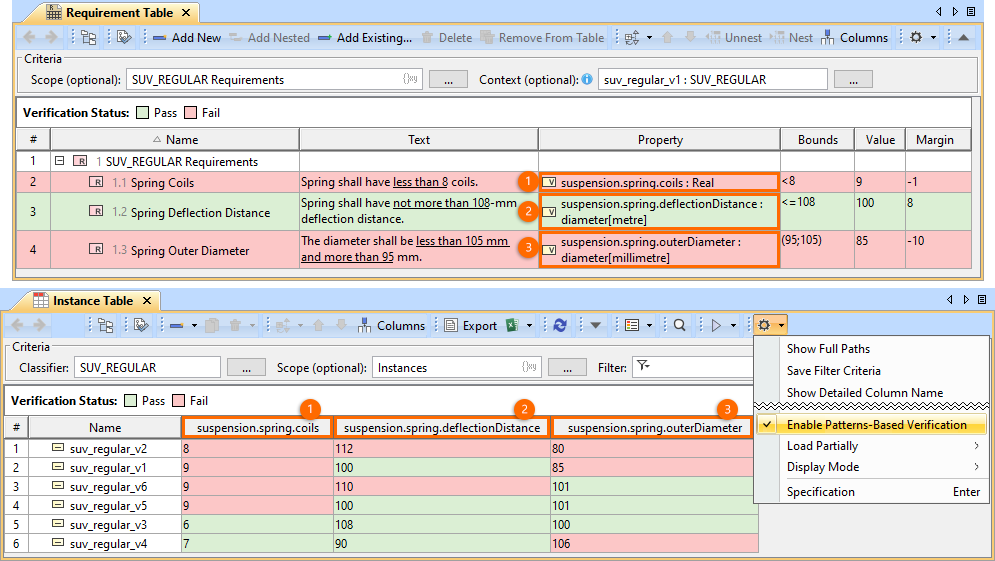SysML Plugin
Released on: November 18, 2022
SysML Plugin 2022x Refresh1 introduces several improvements to Item Flow management. These include an option to select which diagrams containing elements that realize Item Flows to update so they show the newly created flows. Also, a quick way to show/hide flowing items in a diagram, see the element type representation in the Item Flow Direction selection in the Create/Edit Item Flow wizard and auto-removal of not realized Item Flows. In addition, you can now perform the Requirements verification analysis in the Instance table.
Improved Item Flow Management Experience
SysML Plugin 2022x Refresh1 brings several improvements to Item Flow management, which include:
- Selecting diagrams to update flows. From now on, a new Item Flow realization does not end up with unexpected results in existing diagrams (previously, the flow may have been updated or not), as a simple diagram update control mechanism is introduced across the project. The Item Flow Manager dialog and the Create/Edit Item Flow wizard are now enriched with the ability for you to choose which diagrams with the realizing elements to update.
- A quick way to show/hide flowing items in a diagram. Display/hide the flowing items quickly using the dedicated action in the smart manipulator.
- Element type representation in the Item Flow Direction selection. Selecting the direction for the Item Flow in the Create/Edit Item Flow wizard is now easier as the icons indicating element types are displayed next to the element names, allowing you to identify the sender and receiver more easily.
- Auto-remove not realized Item Flows. You can now specify the newly introduced Remove Not Realized Item Flows SysML project option to automatically remove Item Flows after the last element that realizes them is deleted. Additionally, you can run the validation to check whether there are any Item Flows in the model that are not realized.
Learn more about Item Flow management >>
Requirements Verification in Instance Tables
In addition to performing requirements verification in Requirement tables, now you can also carry it out in Instance tables. While the verification in a Requirement table allows you to perform the analysis for a single instance set as the context, the verification in an Instance table allows you to perform the analysis for multiple instances at once via the Enable Patterns-Based Verification option. It allows you to analyze multiple instances conveniently and efficiently.
Performing the Requirements verification analysis in the Requirement table vs. the Instance table.
To learn more, watch the following video:
Learn more about requirements verification in Instance Tables >>
Other Improvements
- When you create an Action directly inside the Structured Activity Node, the Allocated To property is specified automatically according to the allocation mode.
Documentation
News of earlier versions



